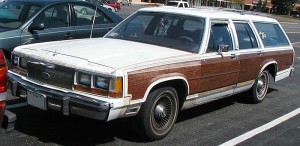The energy of Thanksgiving travel


Nearly 61 million Americans traveled last week during the Thanksgiving holiday. The energy required for the annual commute might be nearly enough to power 1,575 homes for an entire year!
AAA estimated that 38.2 million Americans would be driving an average trip of 706 miles to visit their favorite in-laws. A spokesperson said that the average vehicle gets 24 MPG, so each car would be burning 29.42 gallons of gasoline.
From here on out I’ll take a few liberties in my calculations – put on your ‘fun hats,' this wouldn't have earned me any extra credit (or sympathy) in Temple's college statistics courses.
The U.S. Census says that there are 2.60 persons residing per household – that works out to approximately 14,692,308 cars on the road.
That figure may sound extreme, but a 2007 Department of Transportation study estimated that there were 254.4 million registered passenger vehicles in the United States.
The nearly 14.7 million cars that made the trip would have consumed 432,247,693 gallons of gas. There is 33.41 kWh/Unit in a gallon of regular gas; 12,937,674.1 kWh of energy would have been used.
704,446 passengers traveled by AMTRAK for the holiday week in 2010 – let’s assume that the passenger volume remained constant this year. Amtrak serves 78,000 people daily, with nearly 260 people occupying each train.
It would take 2,709 comparable trains to move holiday travelers to their Thanksgiving feasts. Assuming the average rail passenger is making a 706-mile journey. That’s 1,896,300 miles of rail travel at 28.8 mpg using 65,843.75 gallons of diesel fuel.
AMTRAK uses a combination of techniques to make its trains more energy efficient, and says that its diesel trains are 30 percent more efficient than auto travel on a per-passenger-mile basis. A car’s 24-MPG is adjusted upward to 28.8-MPG.
Each gallon of diesel gasoline is equivalent to 37.95 kWh. Therefore, rail passengers would account for 2,498,770.31 kWh.
The Air Transport Association estimated 23.2 million air travelers this holiday season. An Airbus A321 is a very common aircraft in the U.S. and transports about as many people as the other commercial workhorse, the Boeing 737.
Information cached on the defunct GB Airways Web site told me that the average cruising speed of an A321 is about 530.03 miles/hour, and its fuel consumption is 792.52 US gallons each hour. Assuming the cabin is full with 189 maximum passengers, the airbus would be consuming 1.50 gallons of kerosene jet fuel per mile. That’s 1,059 gallons of jet fuel per every 706-mile route.
23.2 million passengers divided up into groups of 189 means that there would have been nearly 122,751 flights over the Thanksgiving holiday. On average, there are 28,537 commercial flights per day, according to the National Air Traffic Controllers Association.
Having 122,751 flights take to the air for 706 miles roundtrip would require 129,993,309 gallons of jet fuel. Jet fuel contains 37.54 kWh per gallon, and suspending disbelief, a total of 3,462,794.59 kWh would have been consumed on air travel.
The grand total of energy holiday travelers used between land and air would be 18,899,239 kWh. Per capita household energy use is about 12,000 kWh in the United States, so holiday travel would power 1,575 homes for a year.
However, the necessities of modern life are more energy hungry than you may think. The U.S. Energy Information Administration says that (23 billion kWh) is used to keep food frozen every year, so comparatively, holiday travel would only keep freezers cold for about one morning.
My figures are likely way off from reality, but a mass migration of tens of millions of people is no simple task. It takes a significant amount of energy.
This post was originally published on Smartplanet.com